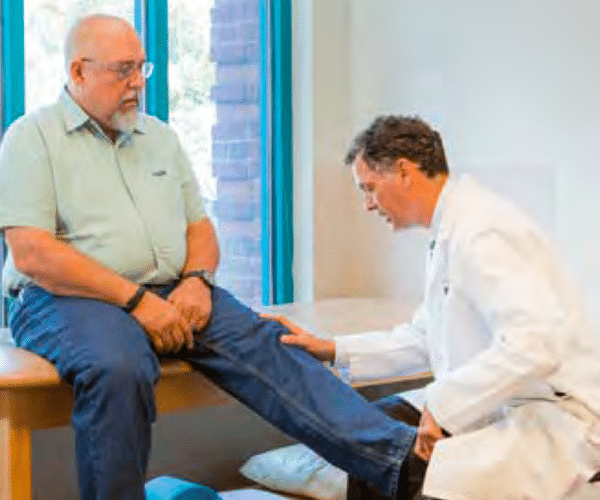BACK TO FULL SPEED WITH PARTIAL KNEE REPLACEMENTS
Bilateral Parital Knee Replacement Success Story

BOB’S STORY
The very day after Bob Whitehead had a bilateral partial knee replacement, he already felt better than he had in months. Since then, life has only improved for the retired police sergeant and Air Force veteran.
“I used to be in pain every time I moved,” says Whitehead, now a facilities and security manager for the Newport News Police Department, where he spent 26 years on the force. “I thought my recovery would be much more difficult, but I was back to work in three weeks and really felt back to normal after three months. This experience was nothing but positive.”
Whitehead, 63, was a perfect candidate for a partial knee replacement, as his arthritis was confined to one inner compartment of his joints, says Dr. Adrian Baddar, his surgeon at Hampton Roads Orthopaedics Spine & Sports Medicine.
“I describe the procedure as one-third of a total joint replacement, which is still a very effective option if arthritis has spread throughout the knee,” Dr. Baddar says. “You’re not creating as much inflammation, so patients experience an easier recovery and, generally, a more natural-feeling knee.”
Today’s partial knees are holding up for 15 to 20 years, similar to total knees, according to Dr. Baddar. Patients often abandon walkers within days and need much less physical therapy. He even has done some single-sided partial knee replacements as outpatient procedures.
By the time he started struggling to climb stairs and get out of his car, Bob Whitehead had heard police colleagues speak highly of HROSM. At his first appointment, in the fall of 2017, Dr. Baddar removed 20 cc of fluid – over half an ounce – from Whitehead’s swollen right knee and administered a cortisone shot.
Whitehead returned about a month later for another shot, but his left knee soon also began to ache. “Dr. Baddar told me, ‘They look like twins on X-rays, and both need to be replaced,’” Whitehead relates. “He was surprised I wasn’t in a lot more pain.”
The decision on single versus bilateral replacement involves each patient’s overall health and knee damage. If one knee is significantly worse, fixing that knee can relieve pressure and keep the other knee functional for several years, Dr. Baddar notes. Otherwise, if a patient is strong enough, the obvious advantage to bilateral surgery is avoiding two rounds of anesthesia and recovery.
Whitehead’s only previous surgery was an appendix removal at age 13, but he credits HROSM and Mary Immaculate Hospital staff – and Dr. Baddar’s sense of humor – with keeping him at ease. He stayed one night, navigated a few steps that evening, and was off narcotic pain medication after four days, taking only Aleve for lingering swelling. He also was shocked at how thin his incisions were.
After a life of service, the married father of three and grandfather of seven is happy to be back in action. “I’ve been to lots of doctors’ offices where you think, ‘Wow, I never want to go back there,’” he says. “Not this time. I got the help I needed very promptly.”

